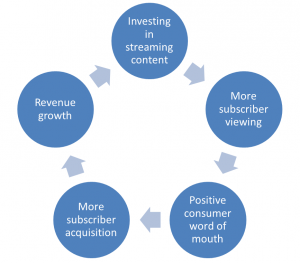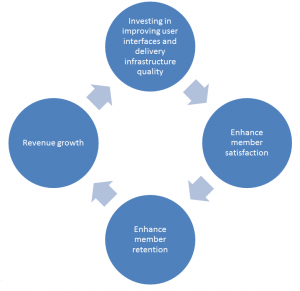By Sasha Cekerevac for Investment Contrarians
 After so many years following the Great Recession, it’s still quite astounding that job creation remains so slow. This obviously indicates the lack of economic growth, even after trillions of dollars have been pumped into the U.S. economy.
After so many years following the Great Recession, it’s still quite astounding that job creation remains so slow. This obviously indicates the lack of economic growth, even after trillions of dollars have been pumped into the U.S. economy.
While there has been a lot of optimistic talk in the mainstream media, there have been an increasing number of data points indicating America’s economic growth is still very fragile.
Recently, the Federal Reserve Bank of New York released the results of its November 2013 “Empire State Manufacturing Survey,” and they didn’t support the economic growth theory.
This report is an indication of the state of manufacturing in New York. The net result is that overall business conditions fell to their first negative reading since May. New orders also fell 13 points into negative territory at -5.5. Labor conditions worsened, indicating a decline in the average number of hours worked per week. (Source: “Empire State Manufacturing Survey,” Federal Reserve Bank of New York web site, November 15, 2013.)
It’s no wonder that job creation is still lagging: the manufacturing industry is still experiencing a lack of economic growth. In fact, these results indicate that manufacturing is beginning to weaken once again.
We can’t have economic growth if large sectors of the U.S. economy are experiencing a decline in business activity.
On top of the decline in manufacturing, the level of prices paid is beginning to increase to a level above what firms are able to charge clients.
In 2013, prices paid by manufacturing firms increased 3.4% on average, and they are expected to increase four percent in 2014. Manufacturing firms estimate that they can only increase prices charged to customers by 1.8% in 2014.
So not only is the manufacturing sector witnessing weak economic growth, but profit margins will be under pressure as input costs are rising faster than the price consumers are willing to pay; this means businesses will incur those costs.
In this scenario, I think it is very unlikely that we will see a huge boom in job creation like the one the mainstream is trying to sell. If you are a business owner of a manufacturing firm looking at this data, would you really begin hiring new employees en masse? I certainly wouldn’t.
But while we are seeing many signs of a lack of economic growth and relatively muted job creation, the stock markets continue to power higher. This has been my worry for some time, that investors are putting all their hope into the possibility that economic growth will emerge without really looking at the data.
Chart courtesy of www.StockCharts.com
With this in mind, it might be wise for investors to hedge against a possible correction in the absence of economic growth. One way to hedge a portfolio is through the use of an inverse exchange-traded fund (ETF), such as ProShares UltraShort S&P500 (NYSEArca/SDS), which moves two times the inverse of the S&P 500.
As you can see in the chart above, this ETF (solid black line) moves down when the S&P 500 (red and black line) moves up; when the stock market sells off, the ETF goes up.
One note of caution: this ETF can be very volatile, which means that this type of strategy should only be used by seasoned investors and with only a small portion of funds for hedging purposes.
No one can predict the top of a market, but in my opinion, we’re in the late innings. Taking appropriate steps to hedge one’s portfolio, or at least partially, is a prudent strategy at this point.
http://www.investmentcontrarians.com/stock-market/news-survey-shows-downturn-in-manufacturing/3331/

 Recently, European Central Bank (ECB) policymaker Jens Weidmann said the strategy of printing money was not the solution to the eurozone crisis. (Source: Carrel, P., “Printing money not the way out of crisis: ECB’s Weidmann,” Yahoo! Finance, November 20, 2013.) Ya, no joke!
Recently, European Central Bank (ECB) policymaker Jens Weidmann said the strategy of printing money was not the solution to the eurozone crisis. (Source: Carrel, P., “Printing money not the way out of crisis: ECB’s Weidmann,” Yahoo! Finance, November 20, 2013.) Ya, no joke!



 Many accuse China of manipulating its economic data to fit what the market wants to see, yet this kind of behavior doesn’t appear to be isolated to China. It even occurs here—if you believe what the New York Post reported in a recent editorial. If it were true, to be honest, I wouldn’t be that surprised.
Many accuse China of manipulating its economic data to fit what the market wants to see, yet this kind of behavior doesn’t appear to be isolated to China. It even occurs here—if you believe what the New York Post reported in a recent editorial. If it were true, to be honest, I wouldn’t be that surprised.